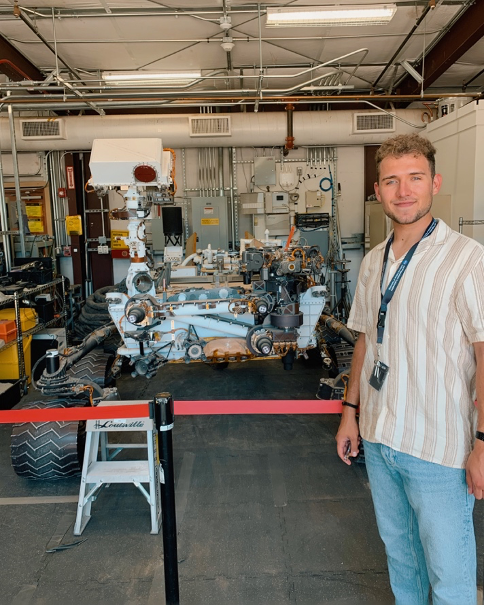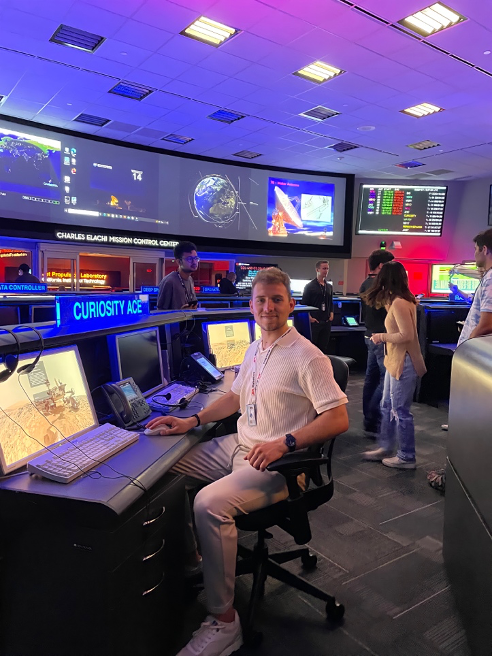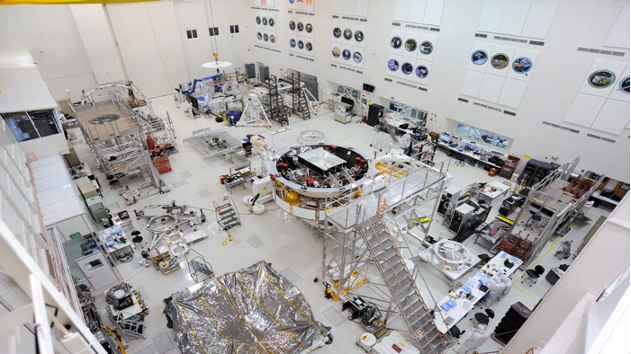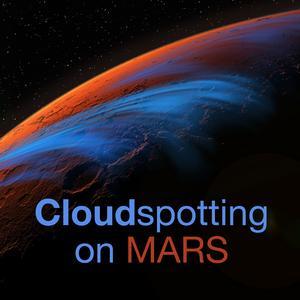JPL Intern on the Cloudspotting on Mars Project
Hi everyone,
I’m Steven from Germany studying Aeronautics with Spacecraft Engineering at Imperial College London. I spent my summer internship at the NASA Jet Propulsion Laboratory (California Institute of Technology) in Pasadena, California. I’m very interested in using data science and machine learning for space exploration. During my time at JPL, I was working on a machine learning algorithm to collect and aggregate the cloud classifications of you and other citizen scientists of the Cloudspotting on Mars project.
My time at JPL was certainly one of the most special ones in my life. I cannot mention all the cool places at JPL, but I’m going to give you my Top 3 below:
1. JPL Mars Yard
The JPL Mars Yard is a simulated Martian landscape used by the research and flight projects to test different robotic prototypes. JPL has copies of the Mars rovers Curiosity and Perseverance. Below you can see me with Curiosity’s twin rover “Maggie”.

2. JPL Mission Control Room
JPL’s Mission Control Room is where mission engineers and scientists communicate and keep track of their mission’s spacecraft via NASA’s Deep Space Network (DSN). The DSN is only international network of antennas that provide the communication links between the mission team on Earth and the spacecraft and rovers on Mars. It is also where the landings of the Mars rovers Curiosity and Perseverance have been controlled from.

3. JPL High Bay
Clean rooms are the final line of defense in extraterrestrial exploration: Spacecraft departing for other worlds are stripped of any biological contaminants there, and samples returning from space are stored in pristine conditions to be studied later.

Working on the Cloudspotting on Mars Project was a special experience especially because I worked at the intersection between two groups: The JPL Machine Learning Group and the JPL Planetary Atmospheres Group. I learned how to build and optimize unsupervised machine learning algorithms and why studying Martian clouds can help answer important scientific questions like “Why did Mars lose so much of its atmosphere in the last billion years?” Learning how to successfully apply data science and machine learning algorithms to natural science problems was the ideal preparation for my future aspirations.
-Steven
You can connect with Steven via Twitter @DillmannSteven or on LinkedIn
